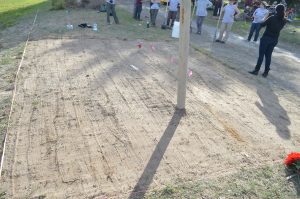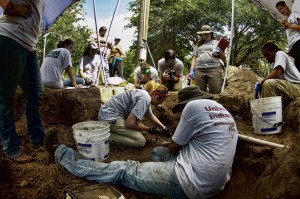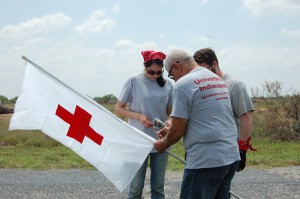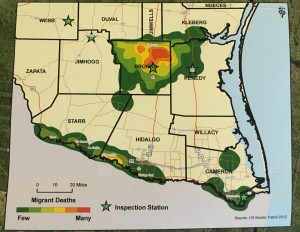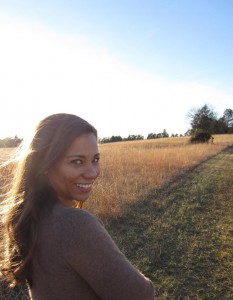Now that we’ve reached Falfurrias, the whole team has assembled and it is time to get to work. We decided to meet in the Sacred Heart Burial Park to plan our excavations. At sunrise, the UIndy team combined with the great people of Texas State to create our one conglomerated mega-team.
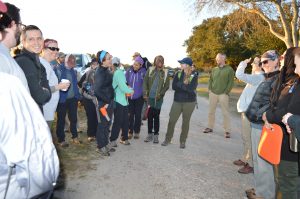
The first step of the process was introductions. Many of our troupe of players already knew each other, but it was a great opportunity to get familiar with new faces. The next step was to describe all of the work that had been done in the previous years (if you are curious about the previous work click here). This was followed by a tour of the cemetery and a survey of the areas in which we will be working over the next several days.
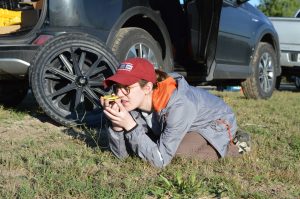
After the tour, we began the slow and methodical mapping and gridding of the area we would be excavating. Normally at UIndy, we hand-draw our site maps; while Leann took on this task, Texas State brought some amazing space-age tools with them to help in the process. One of the tools they brought was a transit mapping system. Normal mapping systems, like the Total stations we have in our lab rely on lasers and a direct line of sight. While they are useful, they can be tough to use in certain conditions. This next-generation iteration does not rely on direct line of sight and can be used nearly everywhere. They also brought ground penetrating radar (or GPR). This equipment provides a way of peering into the ground without having to dig it up first. This saves us from having to completely excavate several areas that may contain nothing at all.
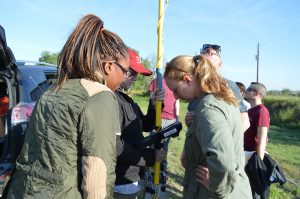
Finally, we finished the day by shovel-shining our areas so they will be ready to excavate tomorrow. Shovel-shining is the process of removing the surface debris and vegetation. Not only is it essential to the process but it also makes everything look pretty. I’m very excited to continue the process tomorrow.
